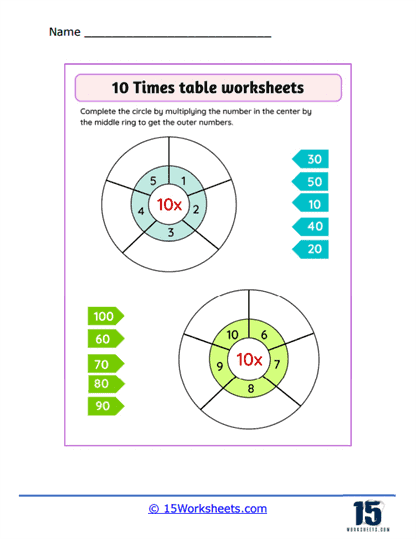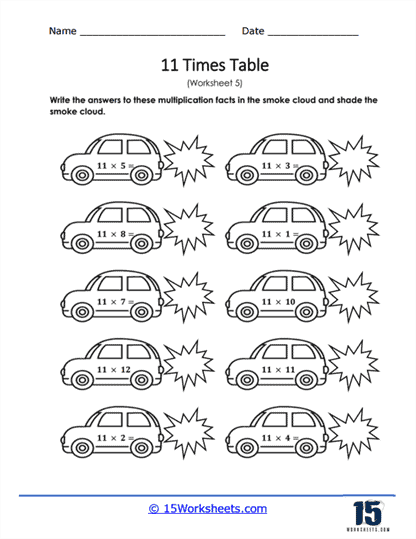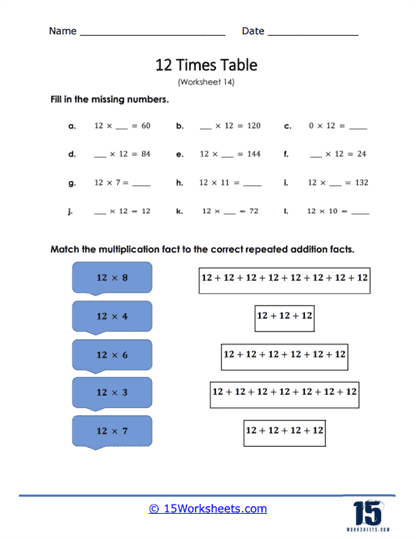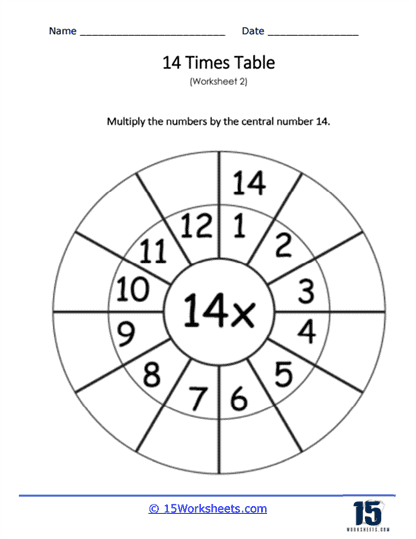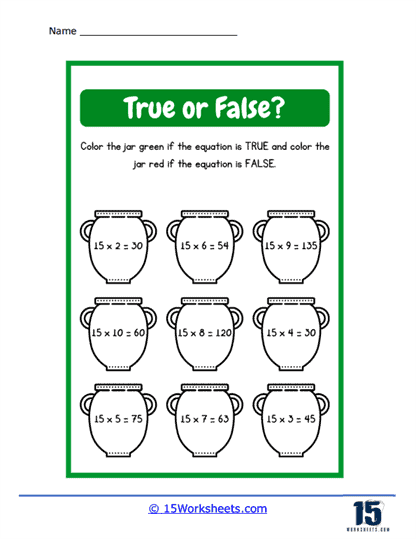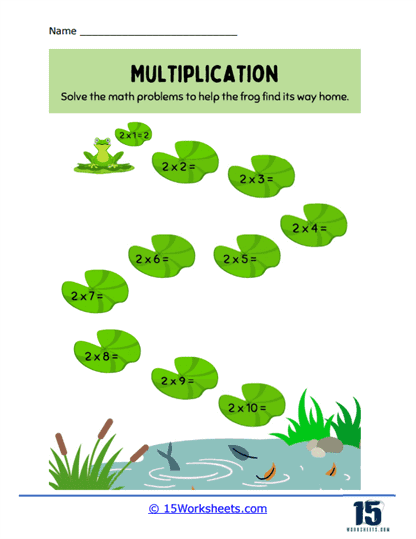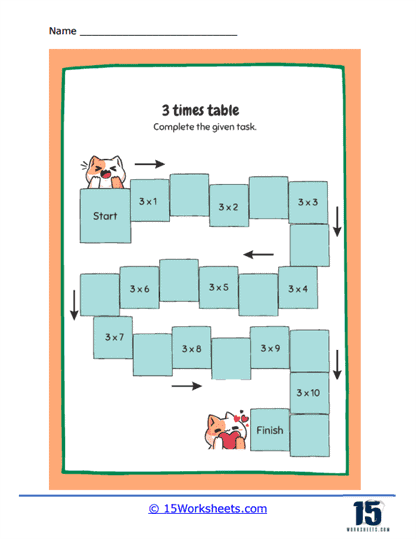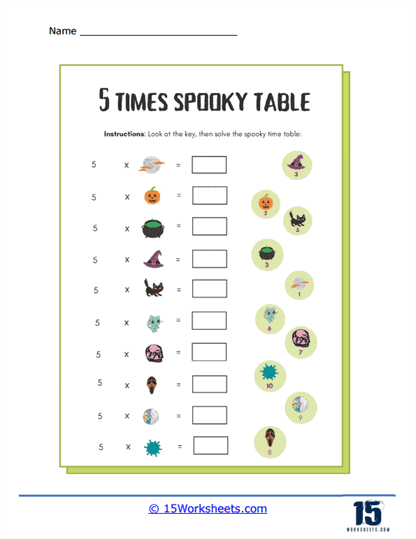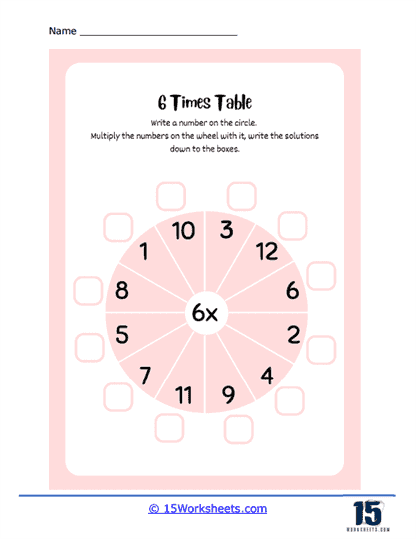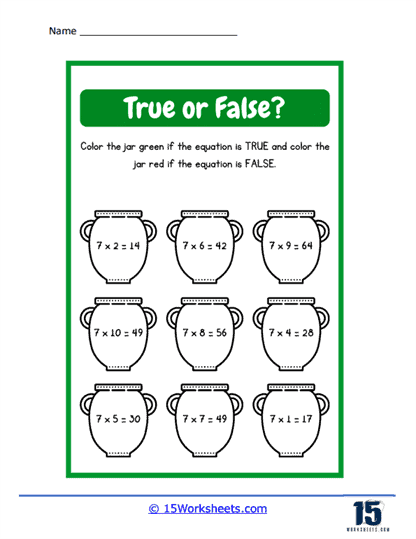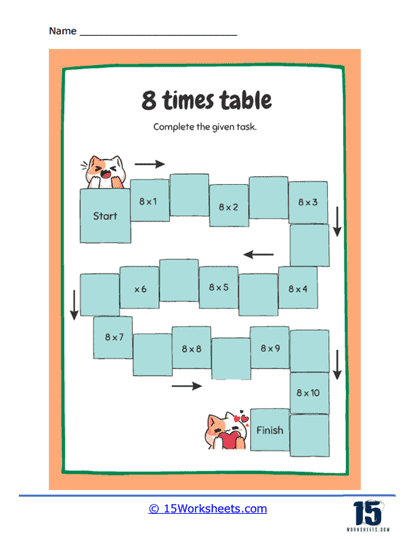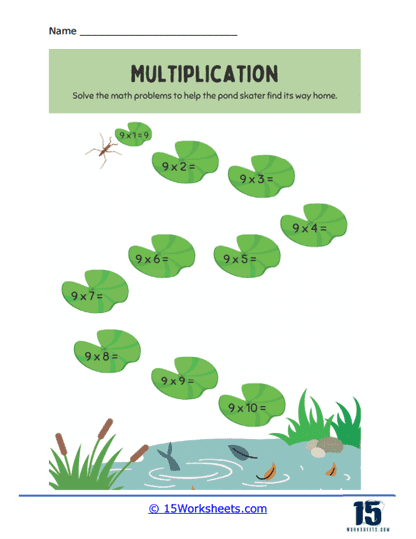Times Tables Worksheets
About These 15 Worksheets
These worksheets provide a series of exercises or problems related to specific times tables. They provide structured practice opportunities for students to memorize multiplication facts, improve fluency, and develop a deeper understanding of multiplication concepts. They are tailored to specific times tables, such as the 2 times table, 3 times table, etc., or may include mixed practice covering multiple times tables. Regular use of times tables worksheets can enhance students’ multiplication fluency and overall mathematical proficiency.
What Are Times Tables?
Times tables, also known as multiplication tables, are mathematical tables used to display the multiplication facts for a specific number. They provide a structured arrangement of numbers, typically from 1 to 10 or 1 to 12, that shows the product of multiplying each number in the table by another number.
For example, the times table for the number 2 would typically include the products of multiplying 2 by each number from 1 to 10:
2 x 1 = 2
2 x 2 = 4
2 x 3 = 6
2 x 4 = 8
2 x 5 = 10
2 x 6 = 12
2 x 7 = 14
2 x 8 = 16
2 x 9 = 18
2 x 10 = 20
Times tables are highly beneficial for students and are typically introduced and learned in elementary school, usually around the second or third grade, although the exact grade level can vary depending on the educational system and curriculum.
What Are The Benefits?
Quick Mental Calculation – Memorizing times tables allows students to perform quick mental calculations without relying on a calculator or written multiplication. This skill is particularly useful in everyday life situations, such as calculating prices, measuring quantities, or dividing items equally.
Multiplication Fluency – Times tables help students develop fluency in multiplication, meaning they can quickly recall and apply multiplication facts without hesitation. This fluency forms the foundation for more complex mathematical operations and concepts that students encounter as they progress in their studies.
Problem Solving – Times tables enable students to solve multiplication problems more efficiently. By having a solid grasp of multiplication facts, students can focus more on the problem-solving process rather than spending excessive time on calculating basic multiplication operations.
Division and Fractions – Understanding times tables is crucial for working with division and fractions. Division is the inverse operation of multiplication, and times tables provide a clear link between the two. Similarly, when dealing with fractions, students need to multiply or divide numerators and denominators, and times tables help simplify these calculations.
Higher Math Concepts – Proficiency in times tables is essential for progressing to more advanced mathematical topics, such as algebra, geometry, and trigonometry. These subjects often involve complex equations and formulas that require a solid understanding of multiplication and multiplication patterns.
What’s The Best Way To Teach Times Tables?
Teaching times tables is a foundational skill in mathematics and, when approached creatively, can become an engaging and enjoyable experience for students. While there is no universally accepted method that works for everyone, several effective strategies have been developed over the years that appeal to diverse learners.
Begin by emphasizing the importance of starting with the basics. When introducing children to multiplication tables, it’s beneficial to begin with smaller numbers like 2, 5, and 10. Why? The 2 times table, for instance, revolves around the simple concept of doubling, which is relatively easy for most kids to understand. Take the number 6: when you double it, you get 12. On the other hand, the 10 times table can be thought of as merely appending a zero to the multiplicand. The simplicity of these tables can provide early confidence, setting the stage for more complex tables.
Using tangible objects can add a layer of clarity, especially for young or visual learners. For example, if a child is trying to understand the concept of 3 multiplied by 4, laying out three distinct groups of four beads each can help them visually and tangibly grasp the concept. This tactile approach appeals to hands-on learners and can be an effective bridge between abstract numbers and concrete understanding.
Music is another avenue through which learning can be facilitated. Many educators and parents have witnessed the benefits of setting educational content, including multiplication tables, to melodies. Numerous times table songs, which are easily accessible online, can transform a potentially tedious exercise into a fun sing-along session. It leverages the fact that humans have a remarkable ability to remember songs, and by association, the content within them.
For those with a penchant for stories or rhymes, crafting small narratives or catchy rhymes can be a useful mnemonic device. An example of this is the rhyme “8 and 8 went to the store, and when they came out, they were 64.” Such rhymes create memorable associations that can be recalled with ease during tests or when solving math problems.
For visual learners, drawing can be an excellent tool. Illustrating multiplication through arrays or grids can be enlightening. Taking the same example of 3 x 4, drawing a grid with three rows and four columns can offer a clear visual representation of the multiplication process. As students progress, these grids also lay the foundation for understanding concepts like the area in more advanced mathematics.
Flashcards, an age-old method in education, remain a staple for good reason. Their repetitive nature, coupled with visual cues, reinforces memory through regular exposure. When students are exposed to these flashcards consistently, the multiplications on them gradually move from short-term memory to long-term memory, making recall during assessments much faster.
The saying “All work and no play makes Jack a dull boy” holds some truth in education. Incorporating games into the learning process can make it not just palatable, but genuinely fun. Games like “Bingo” or “Memory,” adapted for multiplication, or various online multiplication games can make practice sessions something students look forward to.
One of the beautiful aspects of multiplication is the myriad of patterns that lie within. For instance, the unique pattern in the 9’s table is intriguing. When you multiply 9 by any number, the sum of the digits of the result is always 9 (e.g., 9×3=27, and 2+7=9). Highlighting such patterns can turn learning into a sort of mathematical treasure hunt.
However, not all multiplication problems are straightforward. For trickier products, breaking them into simpler parts can be beneficial. A multiplication like 7 x 6 can seem daunting to some, but when viewed as (5 x 6) + (2 x 6), it breaks down into more familiar territory, making the task more manageable.
Beyond these techniques, real-life applications fortify understanding. By connecting times tables to everyday scenarios, such as determining the total number of apples in boxes or slices of pizza at a party, students can see the practical use of what they are learning.
But, like any other skill, multiplication tables require consistent practice. Short, regular intervals of practice can be more impactful than infrequent, prolonged sessions. As students practice, it’s paramount to celebrate their progress. Using a progress chart or a reward system can motivate them and foster a positive attitude towards their learning journey.

